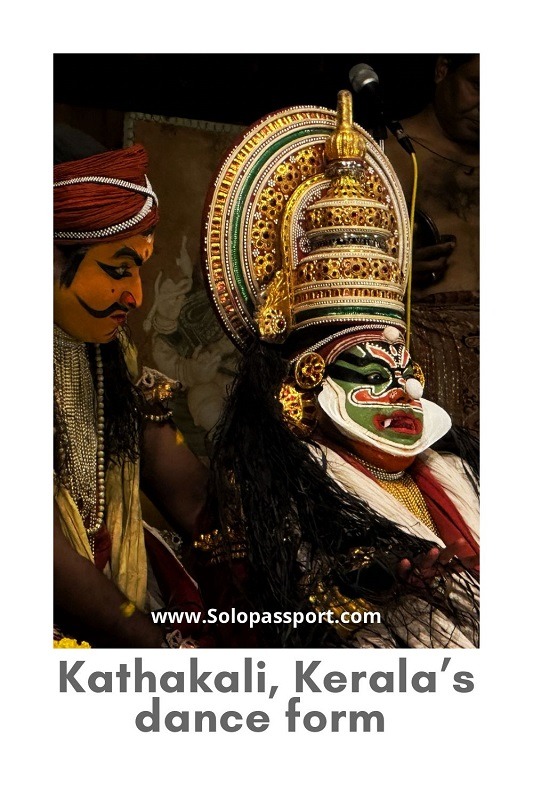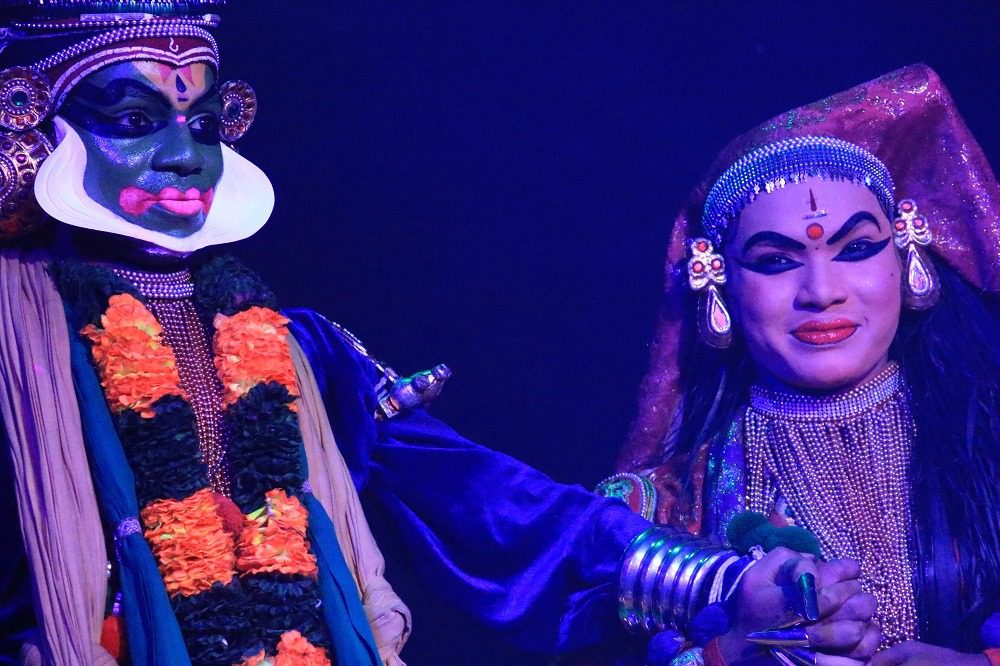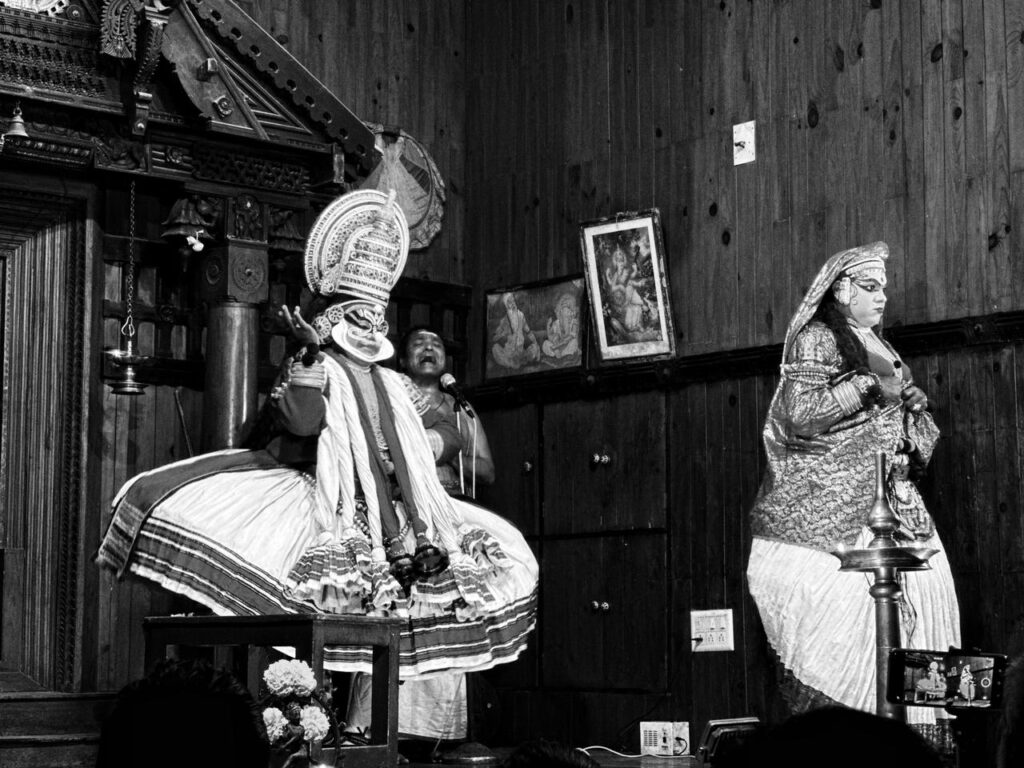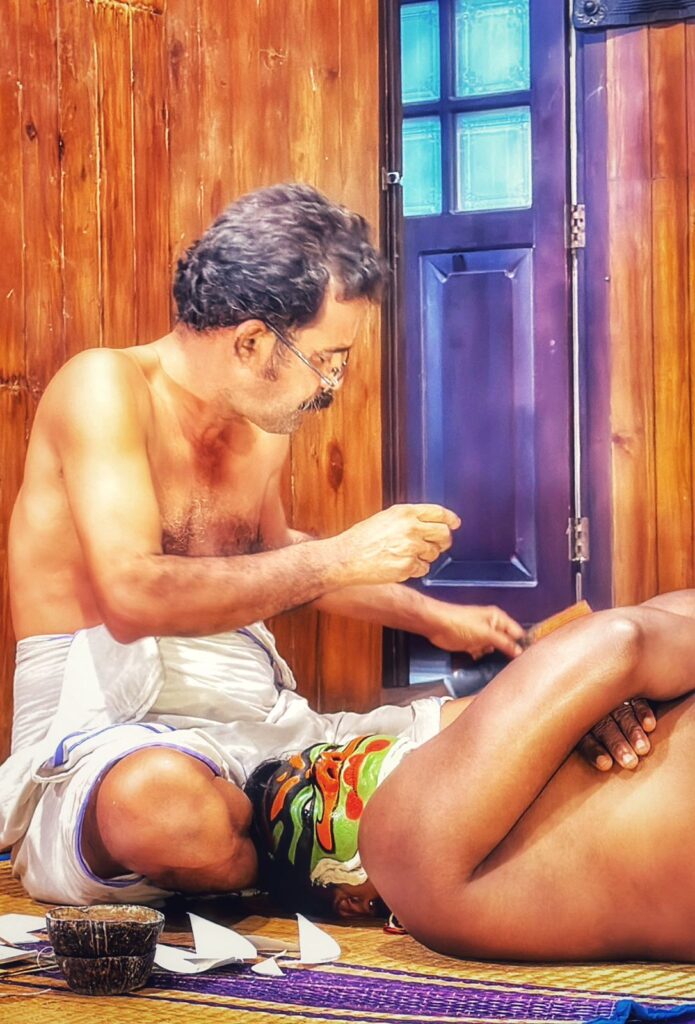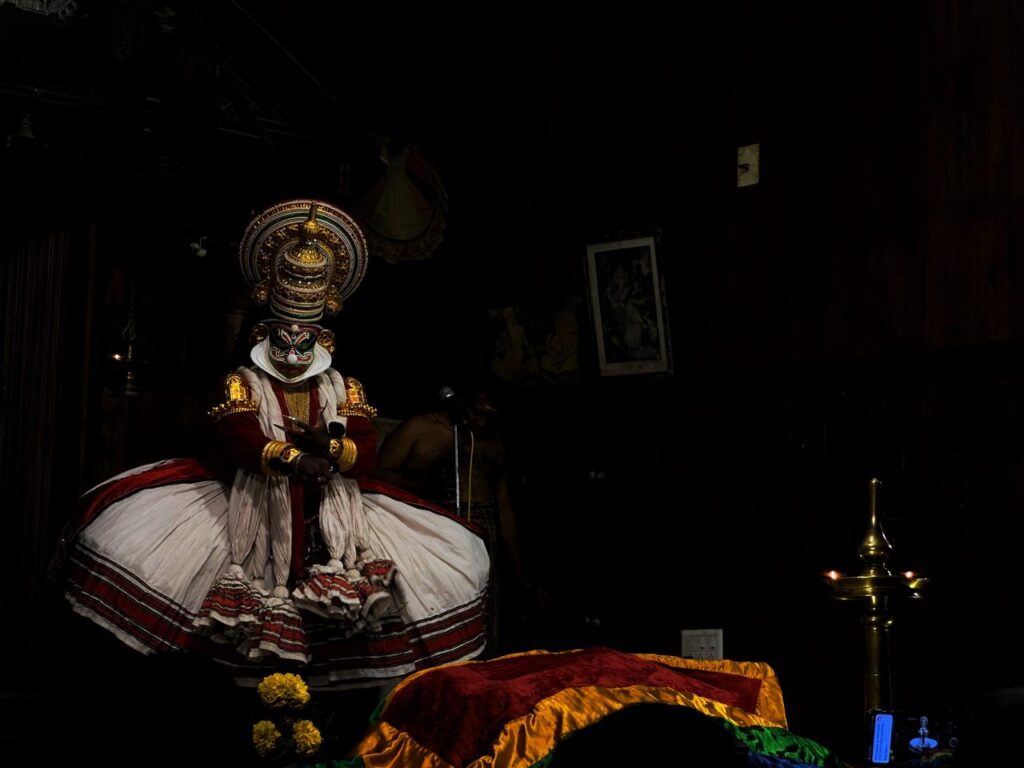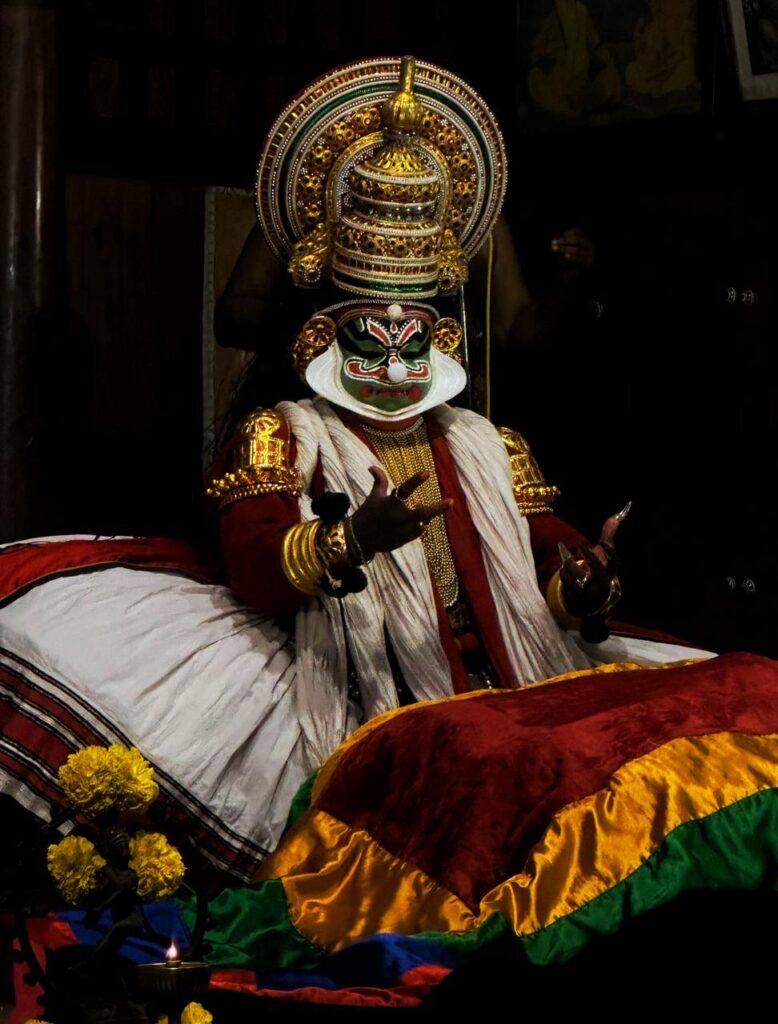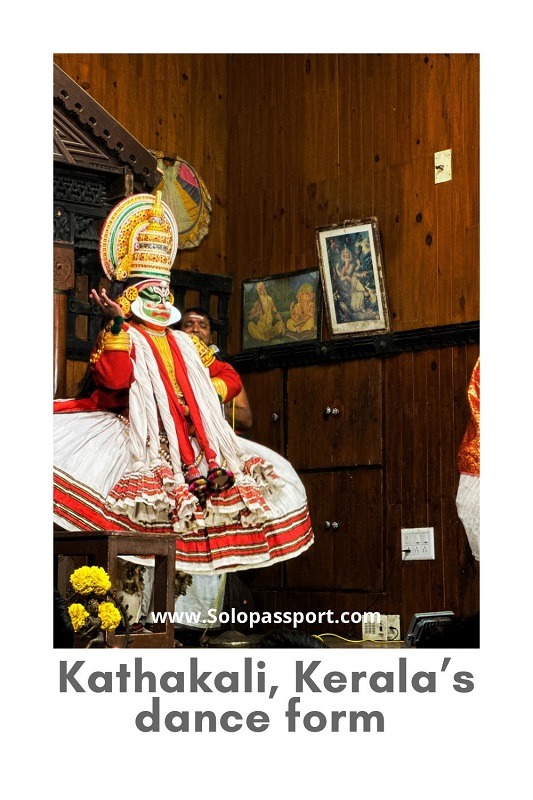Kathakali Dance Drama, Kerala’s Traditional and Classical Dance Form (2024)
India boasts a rich tapestry of diverse dance forms, each intricately woven with its cultural heritage and regional flair. From the vibrant colours of Gujarat’s Garba to the graceful movements of Odissi in the east, there’s a mesmerizing array of styles to explore across the country. Among these, Kathakali dance drama stands out as one of the most captivating and visually stunning dance dramas, deeply rooted in the traditions of Kerala.
Having harboured a deep fascination for Kathakali, I found myself fortunate enough to witness its spellbinding performances not just once but twice. The first occasion unfolded during a pre-Kerala Travel Mart (KTM) tour. This immersive seven-day journey took a group of enthusiastic bloggers and vloggers on a captivating road trip through the picturesque landscapes of Kerala, encompassing enchanting destinations such as Munnar and Kochi. During this unforgettable expedition, I had the privilege of experiencing the awe-inspiring beauty and cultural richness of Kathakali firsthand.
Page Contents
PIN for later reference – Kathakali Dance Drama, Kerala’s Traditional and Classical Dance Form
This article may contain affiliate links, meaning if you decide to purchase via my links, I may earn a commission at no additional cost to you. For complete information, please see our affiliate disclaimer here.
About Kathakali Dance Drama
Kathakali, a classical and time-honoured dance form originating from the state of Kerala, is characterized by its striking blend of elaborate make-up, vibrant costumes, and intricately crafted face masks. This mesmerizing performance art, steeped in tradition and classical elegance, brings to life the narratives drawn from revered mythological epics such as the Ramayana, Mahabharata, and the Shaiva traditions. With its rich tapestry of stories and symbolic themes, Kathakali serves as a captivating medium for storytelling, transcending the boundaries of time and space.
In addition to Kathakali, Kerala boasts another distinctive dance form known as Theyyam, which holds a significant place in the state’s ceremonial traditions, further enriching its cultural landscape.
The name “Kathakali” itself derives from the Sanskrit word “Katha,” meaning story, and “Kali,” which translates to play in the local Malayalam language. This aptly encapsulates the essence of Kathakali as a form of storytelling through movement, music, and expression, depicting the eternal struggle between forces of good and evil with unparalleled grace and intensity.
History of Kathakali
In the 17th century, Kathakali dance drama emerged in the same era as Shakespeare’s renowned works. Its roots can be traced back to the ancient Natya Shastras, among the oldest Sanskrit texts penned by Bharata Muni, a testament to its enduring legacy and cultural significance.
Regarded as one of Kathakali’s most esteemed proponents, Kottarakkara Thampuran is hailed as its founding figure. Pioneering the art form with his rendition of the Ramayana, known as Ramanattam, Kottarakkara Thampuran holds the distinction of scripting the earliest dance dramas. Today, his legacy is commemorated through a dedicated museum at his birthplace in the Kollam district, serving as a testament to his enduring influence.
The training regimen for Kathakali practitioners was rigorous, often conducted within the confines of old boarding schools under the watchful eye of experienced mentors. Students would devote 10 to 11 hours daily honing their craft, with meticulous attention to detail and technique. As part of their training, dancers would utilize weights on their feet, underscoring the discipline and dedication required to master this intricate art form.
Elements of Kathakali
A myriad of elements merge to shape the grandeur of a Kathakali dance drama. These encompass a rich tapestry of plays, costumes, make-up, mudras (gestures), and ragas (musical compositions). Each component contributes to the immersive and captivating experience that defines this classical art form.
Plays Called Attakatha
The cornerstone of Kathakali’s mesmerizing dance performances lies in the narrative framework Attakatha, meaning “enacted story.” Traditionally drawing inspiration from Hindu mythological epics such as the Ramayana, Mahabharata, and the Bhagavata Purana, these tales serve as the thematic foundation for the artistic expression of Kathakali.
In centuries past, Kathakali dance dramas unfolded across marathon sessions, stretching from dusk till dawn, immersing audiences in a marathon of storytelling and spectacle. However, in modern times, these performances have transformed, focusing on condensing the experience into a more manageable timeframe, typically lasting a few hours. This adaptation allows for a more accessible and dynamic presentation of Kathakali, ensuring its continued resonance with contemporary audiences.
Costumes and Make-up
Kathakali’s allure lies in its extravagant make-up and costumes, comprising vividly painted faces, ornate headpieces, expressive face masks, and intricately adorned attire.
This resplendent adornment serves a dual purpose, enhancing the performances’ aesthetic appeal and storytelling clarity. By clearly delineating archetypal characters such as gods, goddesses, demons, and others, the make-up facilitates audience immersion into the rich tapestry of Kathakali’s mythic world.
The make-up palette encompasses seven distinct types, each corresponding to specific character traits and roles:
- Pachcha (green)
- Kathi (knife)
- Pazhuppu (ripe)
- Kari (black)
- Thaadi (beard)
- Minukku (radiant)
- Teppu (red)
In addition to the make-up, Kathakali’s costumes play a pivotal role in character portrayal, distinguishing between heroes, villains, and female roles. The four primary costume types include:
- Minukku: Worn by female characters
- Sathwika: Reserved for the hero
- Kathi: Adorning the villainous characters
- Thatti
These elaborate, meticulously crafted and tailored costumes serve as visual extensions of the characters they represent, heightening the dramatic impact of Kathakali’s narrative performances.
Mudras
Kathakali dance drama boasts a repertoire of approximately 24 mudras (movements), emphasising the nuanced interplay of facial, eye, and hand gestures. These movements serve as the cornerstone of Kathakali’s expressive storytelling, enabling performers to convey myriad emotions and narratives with precision and grace.
The nine primary facial expressions known as Navarasas are central to Kathakali’s dynamic range. Each Navarasa embodies a distinct emotional quality, ranging from the tender depths of love to the fiery intensity of anger. The Navarasas include:
- Love
- Anger
- Sadness
- Sarcasm
- Bravery
- Fear
- Disgust
- Curiosity
- Silence
Through masterful manipulation of these Navarasas, Kathakali performers breathe life into their characters, captivating audiences with the depth and authenticity of their emotional portrayal.
Music and Ragas
The melodic tapestry of Kathakali dance dramas is intricately woven with the harmonious strains of music, sung by skilled vocalists and musicians, perfectly synchronized with the fluid movements of the dancers and the unfolding narrative.
Various musical instruments accentuate the rhythmic cadence of the performances, each lending its distinctive timbre to the melodic composition. These include:
- Maddalam: A barrel-shaped percussion instrument, its resonant tones form the rhythmic backbone of the music, providing a steady pulse for the dancers to synchronize their movements.
- Chenda: A cylindrical drum played with curved sticks, the Chenda infuses the performances with its robust and dynamic rhythms, adding depth and energy to the musical accompaniment.
- Idakka: An hourglass-shaped drum, the Idakka contributes to the melodic ensemble with its distinctive, resonant tones, enriching the auditory experience with intricate patterns and flourishes.
These traditional musical instruments create a vibrant and immersive sonic landscape, enhancing the emotional resonance and dramatic impact of Kathakali’s storytelling through music and movement.
Also, Read 10+ Best Things To Do in Kannur
Where to See Kathakali in Kerala?
In contrast to Karnataka‘s dance form, Yakshagana, Kathakali enjoys regular performances accessible to the public in various regions across Kerala. These captivating displays have been condensed to span just an hour or two, allowing audiences to experience the essence of this exquisite art form within a shorter timeframe.
Having attended Kathakali performances in both Munnar and Kochi, I’ve witnessed the spellbinding allure and cultural richness of this traditional dance drama firsthand.
Kathakali in Kochi
Established in 1990, the Kerala Kathakali Centre in Fort Kochi is a premier destination for experiencing the enchanting world of Kathakali performances, offering visitors a unique glimpse into the intricate artistry behind the scenes. This esteemed centre showcases the splendour of Kathakali dance drama and celebrates the ancient tradition of Kalaripayattu martial arts.
Are you looking for a place to stay in Fort Kochi? Read Dutch Bungalow, a Heritage Stay in Fort Kochi
The centrepiece of the experience is the one-hour Kathakali performance, meticulously curated to provide audiences with a comprehensive overview of this revered art form. The performance unfolds in two distinct segments: the first half-hour offers a captivating demonstration, illuminating the various elements and techniques integral to Kathakali. In contrast, the latter half-hour transports viewers into the realm of Hindu mythological tales through a vivid portrayal of a scene.
Visitors are invited to immerse themselves in the mesmerizing spectacle, with performance timings from 6 PM to 7 PM, preceded by an insightful make-up session from 5 PM to 6 PM.
Admission to this cultural extravaganza is priced at INR 1000 per person, offering an unparalleled opportunity to delve into the rich heritage and artistic legacy of Kathakali.
Kathakali in Munnar
In Munnar, many venues offer captivating Kathakali dance drama performances, each showcasing the vibrant cultural heritage of the region. However, my personal experience led me to the Punarjani traditional village, nestled approximately 7 kilometres from the bustling heart of Munnar.
Punarjani stands as a quaint and authentic haven for traditional performing arts, boasting a small yet enchanting theatre that hosts a diverse array of shows, including Kathakali, Theyyam, Bharatnatyam, and the revered Kalaripayattu martial art.
Commencing promptly at 5 PM every day, the performances at Punarjani promise an immersive journey into the rich tapestry of Kerala’s artistic traditions.
For those seeking to partake in this cultural extravaganza, Punarjani offers a range of seating options to suit every preference and budget. Admission rates are as follows: Platinum – INR 500, Gold – INR 400, and Silver – INR 300 ensuring accessibility for all who wish to witness the magic of Kathakali and other traditional art forms in this idyllic setting.
Closing Notes
Kathakali is a captivating art form, weaving together timeless narratives that resonate deeply with our childhood memories. I wholeheartedly endorse experiencing this mesmerizing spectacle at least once in a lifetime, as it offers a profound immersion into the cultural essence of Kerala.
As for my encounters with Kathakali, I’ve been fortunate to witness its splendour in various settings, each leaving an indelible mark on my soul. From the vibrant performances at cultural centres in bustling cities to intimate showcases in traditional villages, each experience has been a journey of discovery and enchantment.
I would love to hear about your experiences with Kathakali or any other cultural adventures you’ve embarked upon. Feel free to share your stories with me at Solopassport@gmail.com. Let’s celebrate the rich tapestry of our world’s cultural heritage together!
How can you support me?
You know how much I love coffee, so you can buy me a coffee – Buy me Coffee!
Or you can purchase from one of the below travel resources without any extra charge to you:
Travel Resources
Book your flight on Skyscanner.com or Trip.com
Reserve your accommodation on Stay22
Reserve your stay at a hostel on HostelWorld
Use RentalCars or DiscoverCars for hiring self-driven cars
Book your tours and travels or purchase tickets on Viator or GetYourGuide
For a universal SIM card, use DrimSim
Buy comprehensive travel insurance on SafetyWing and WorldNomads
If you liked this article and if it was helpful in your planning or travelling, do share, tweet, or pin this post.
Follow me on Instagram | Facebook | YouTube | Twitter | LinkedIn
Do you have a question? Do you want any suggestions and tips for travel, hikes, and scuba dives? Use the Subscription box below to sign up and get updates by email.


